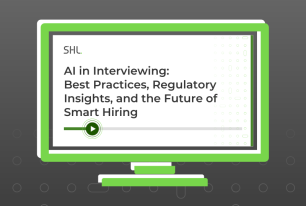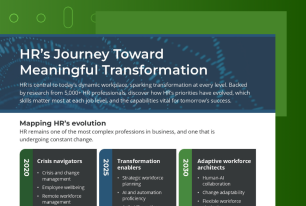Don’t Let Your Hiring Process Fail at the Finish Line
You’ve built a solid hiring process, but despite all the effort to create a fair and effective process, the final decision of who joins your team often happens in a flurry of unstructured chats, gut feelings, and scattered notes. Discover how bringing interview intelligence to the “last mile” can secure fairness, compliance, and better hires.
Share
The hidden chaos undermining your efforts
Many organizations put real effort into building a structured hiring process, training interviewers, using scorecards, and setting clear criteria. Yet when it’s time to make the most important decision of all - choosing the final candidate - organizations end up in the same blur of informal chats and guesswork. Even when talent acquisition leaders own the interview process, this “last mile” is often where hiring rigor quietly unravels.
Here are some of the most common things we’ve heard organization’s struggle with:
- Feedback scattered across platforms: Interviewers send notes via email, group chats, or shared docs, making it nearly impossible to track all opinions or ensure everyone has the same information.
- Memory-based evaluations: Interviewers rely on memory or hastily scribbled notes, leading to forgotten details and inconsistent recollections, especially when interviewing multiple candidates in short succession.
- Informal debriefs: Hiring teams gather for quick, off-the-cuff chats where they try and make sense of comments like “I liked their energy” or “They seemed like a good fit.”
- Conflicting impressions: One interviewer recalls a candidate’s answer positively, while another remembers it differently, but there’s no objective record to resolve the dispute.
- Last-minute fact-checking: Recruiters or panellists waste time revisiting earlier interviews or resumes to recall what was discussed leading to inefficiencies and delays in decision-making.
These challenges result in a process that’s inconsistent, opaque, and vulnerable to bias, undermining all the structure you’ve worked so hard to build. Eventually, a decision is made but often without clear evidence or consistent criteria. First impressions can outweigh actual interview content. One manager may score tough; another may go with their gut. There’s no shared framework for comparing candidates.
Four questions to ask about your process
- Are candidate notes recorded in a structured way?
- Can we track and compare scores across interviewers or roles?
- Do we analyze interviewer behavior to improve fairness or consistency?
- Is interview data used to improve hiring decisions or inform talent strategy?
Interview intelligence: Turning data into better hires
Interview intelligence transforms the last mile by capturing, structuring, and leveraging interview data. Tools now record and transcribe interviews, highlight key moments, and centralize feedback for easy review and comparison. This isn’t about replacing human judgment with AI but about making decisions based on real evidence, not just “vibes” or selective memory.
With a smarter interviewing process, you can benefit from:
- Consistent scoring: Centralized scorecards and standardized criteria held in a searchable system mean everyone is working from the same information, reducing bias and confusion.
- Improved efficiency: AI note-taking tools that can capture, summarize, and structure interview feedback automatically can save time and reduce reliance on manual processes.
- Measurable outcomes: Report on interview metrics alongside time or cost to hire to inform hiring decisions, workforce planning, and continuous improvement.
- Interviewer accountability: Scoring patterns and interviewer effectiveness are regularly analyzed to identify bias or inconsistency and provide targeted training.
Don’t let your hiring process fail at the finish line.
Read our guide for practical tips on how to level up your interviewing process for faster hiring cycles, improved quality-of-hire, and better first-year performance.









